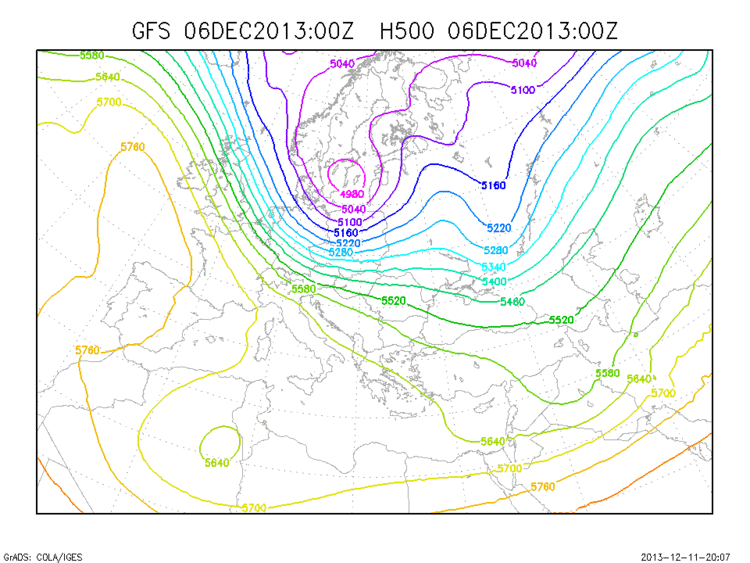Formed December 11, 2013 | Dissipated December 15, 2013 | |
 | ||
The 2013 Middle East cold snap, also referred to as Alexa, refers to the winter storm that hit the Middle East region in December 2013, affecting Israel, Turkey, Cyprus, Syria, Lebanon, Jordan, Palestine, and Egypt. The storm caused mayhem to millions of poor and displaced people across the region, especially afflicting refugees from the Syrian conflict.
Contents
Cyprus
By December 14, the storm had covered the island's Troodos mountain range with snow. Snowing had begun several days earlier, with snow reaching a peak thickness of 70 cm (28 inches) in Troodos. Four hundred customers lost electricity, and several villages, including Armenohori, Farmakas, Kampi, and Sina Oros, completely lost it for extended periods of time.
Egypt
Egypt's capital Cairo witnessed extremely rare snowfall (mostly graupel) on Friday December 13 that the local media claimed to be the first in 112 years and night temperature was expected to drop as low as 2 °C (36 °F). Snow also fell heavily on Sinai mountains.
Israel
On 13 December 2013, 40–70 cm (16–28 in) of snow fell in Jerusalem and 1 m (3 ft 3 in) in the Kefar Etzion area. Warmer parts of Israel received heavy rains, causing floods. The railway into Jerusalem ran although it was Sabbath for people stranded by blocked roads.
Roads were closed in Israel by deep snow and flooding. Storm clouds prompted Ben Gurion International Airport to shut down, forcing US Secretary of State John Kerry to cut short his meeting with Palestinian President Mahmoud Abbas in Ramallah to return to Israel before roads and airports were out of service. Jerusalem was cut off for 48 hours by deep snow and flooding and cars abandoned after they got stuck in snow.
West Bank
Ramallah, Bethlehem, Jerusalem, and Hebron and many other towns and cities were coated in snow and some lower-lying areas suffered flooding from heavy rain.[10]
Snow in Ramallah, Nablus, and Hebron ranged from 60–145 cm (24–57 in), and in Bethlehem 20–55 cm (7.9–21.7 in). The scene in Manger Square, the square adjacent to the Church of the Nativity was that of a white Christmas with the square fully decorated and covered with a deep coat of snow.
Gaza Strip
The Gaza Strip was lashed by torrential rain for a third day, and its Hamas rulers said that residents had been evacuated from 60 flooded homes since storms hit the coastal territory on December 11.
Jordan
In Jordan, Ghazi Sarhan, spokesman for Jordan’s Administration of Syrian Refugee Camps, announced on December 13, that “During the past 48 hours 10,000 blankets and 1,500 heaters have been distributed to refugees.” Deep snow fell in Amman, where King Abdullah II of Jordan helped to push a car that had got stuck in snow.
Lebanon
It was reported that the Lebanese Army was called in to help distribute emergency aid to Syrian refugees, as the UN handed out fuel, blankets, heaters and food rations yesterday amid a third day of severe winter weather in the region.
According to Abou Faour's announcement, published in Al Nahar newspaper on December 12, “There are 1,600 refugee [makeshift camps] in addition to 431 random camps, which makes it difficult to reach these places. That is why the cabinet had to ask for the help of the army to make as much aid reach those refugees as possible”.
Syria
The United Nations High Commission for Refugees (UNHCR) issued plans to airlift 40 tonnes (39 long tons; 44 short tons) of food for 50,000 to 60,000 people into the northeastern province of Hasakha from Iraq. The UN airlift of urgently needed food for tens of thousands of people in northeastern Syria, originally planned for December 12, was delayed by snow.
According to Matthew Hollingworth, Syria Country Director for the United Nation’s World Food Programme, most internally displaced Syrians fled their homes with few belongings so they do not even have enough warm clothes or blankets to fend off the freezing weather. They desperately need fuel for heating and to cook the food they receive as humanitarian assistance.” Reportedly, a child and a baby died from the cold on December 12, and an activist in a besieged rebel-held town of Hara said residents were struggling to stay warm with the electricity cut off and no food or fuel allowed in.
In southern Syria, the Golan Heights were covered with snow up to at least 100 cm (39 in) deep.
Meteorological history
Beginning December 11, there was a big anticyclone inside a big southward meander in the jet stream over Europe; its east edge drew a strong current of cold air south from the Arctic. This polar outbreak overspread Turkey and the Eastern Mediterranean region, pushing below moist air associated with a passing front, causing heavy snow and sleet over higher elevations in Syria, Lebanon, Jordan, and Israel. At lower elevations, heavy rain from the system caused flooding in some areas.
(The west edge of the same anticyclone drew in a warm southwest wind from around the Azores to Britain.)
